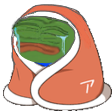Chapter 1445: Chapter 1077: Turning Point_2 Chapter 1445: Chapter 1077: Turning Point_2 This is good, at least Yang Ping personally verified whether the problem exists. He immediately took some samples and looked at the images for an hour himself, indeed not finding a single infected cell.
Based on the experience from the last experiment, the distribution of this infection is very even, there should be no biased concentration, so if one can’t find an infected image by manually looking for an hour, there definitely won’t be any later.
But Yang Ping was still not at ease, what if the infection did concentrate in a biased manner, with all the images in the front part showing a zero infection rate, and all the infections concentrated in the latter images. It’s like fishing, fish are not necessarily evenly distributed in the river, if the fisherman happens to be in a fish-free zone, of course, they can’t catch fish, but at this time it can’t be said that there are no fish in the river. The likelihood of this is very small, but it’s not nonexistent. This creates an illusion–that all specimens are uninfected.
Science is rigorous, and problem-solving must be as airtight as possible, any loopholes can disturb the thought process, leading to the entire experiment’s failure.
“What should we do?” Professor Zhang Zhiwei felt the seriousness of the situation, if it was the case, then the experiment might face failure because the infection rate was relatively low at that point, but if it could maintain the infection rate, using multiple treatments could achieve excellent effects. Now suddenly a zero infection rate appears, and no matter what, there won’t be any treatment effect.
“Let’s first rule out if there is a malfunction with the image analysis software, reshuffle the order of all images, and run them through the image analysis software again. Pull out all the electron microscope images from the previous experiments, and run them through the image analysis software again. Have the software developers join in the analysis during the detection, so we can check if there’s a problem with the software. If the software isn’t the issue, we’ll randomly select a portion from the reshuffled images for manual image analysis, and extend the time for manual identification, let’s all work hard today.”
Yang Ping, after some thought, put forward his own solution, the experiment had come this far, and it must not fail due to any oversight.
Professor Zhang Zhiwei immediately arranged the work, and to shorten the time of the experiment, Yang Ping called over all Sanbo Hospital Laboratory staff to help with image reading, they all had the necessary skills for image reading, and the manual process was very slow, going through each image, having more people would mean more images reviewed, a larger sample volume, and much greater reliability of the conclusions.
All computers in the laboratory were utilized, everyone took turns starting to read the images conscientiously and meticulously, when machines are not functional or trustworthy, human effort is the only and last resort.
The most reliable thing is man, and the least reliable also is man, this saying is equally applicable to machines.
Computers formed a large circle with Yang Ping and Professor Zhang Zhiwei sitting in the middle. Yang Ping closed his eyes to rest his mind, pondering what other loopholes in the experiment he hadn’t considered. Professor Zhang Zhiwei also didn’t speak, when an experiment encounters such a sudden change, if the change is a fact, and not a machine-generated error, it means all the previous efforts might have been in vain, which made Professor Zhang Zhiwei feel very uncomfortable inside.
Manual image identification is very straining on the eyes, and to review a few more images, several bags of eye drops were temporarily brought in, but there was no choice, if the sample size is too small it wouldn’t prove anything, so everyone tried to review as many images as possible.
Around ten o’clock at night, Yang Ping looked at the time: “Everyone stop working, have a good rest tonight, and we will continue tomorrow. The follow-up puncture and blood draw samples will also come tomorrow, and we will add another experimenter tomorrow, this way the data will be even more reliable.”
Originally, the experiment schedules for Zhao Yufan and Sisi were staggered, but now it was necessary to conduct them together, so the data from both could be compared, preventing any discrepancies.
Yang Ping didn’t want everyone to stay up late. This work is important, but it is not so urgent, it’s not necessary to sacrifice health to shorten these ten plus hours. Staying up not only harms one’s health but can also lead to mistakes in this meticulous work. When one is exhausted, attention will definitely decrease, and it’s very easy to miss details in the images.
The next day, the work continued, lasting until the evening, a total of 12,000 images were manually reviewed, and 27 were deemed to be infected by the virus, but after a review by Yang Ping and Professor Zhang Zhiwei, these 27 were considered false positives, the tumor cells in these images were not infected by the virus.
The result of the artificial image recognition was that out of 12,000 images, not a single Tumor Cell was infected.
Could there be an issue with the image recognition software? After testing the software with the original images, it was confirmed that the software had no issues, which means the abnormal data observed in this experiment were factual.
Combining manual and software-based image analysis, not a single cell in this experiment’s Tumor Cells was infected, indicating either a zero infection rate or an extremely low one, making it impossible to collect any positive samples. Why did this happen?
Why could this be?
Yang Ping called for a meeting with all the experimental team members to discuss.
“Regarding the K virus we used, it is the same as in previous experiments. With the current situation, there are several possibilities: First, the K virus was eliminated by the human Immune system before reaching its targets; second, the K virus has lost its ability to infect Tumor Cells,” Professor Zhang Zhiwei analyzed.
Lu Xiaolu agreed with this view. After some thought, he said, “Regardless of which situation it is, either the K virus has mutated, leading to a decreased or lost capability to counter the Immune system or to infect Tumor Cells, or the human body has developed some form of defense over the course of several experiments, like enhanced immune cytotoxicity against it, or the Tumor Cells have changed to reject the virus. After all, the K virus has been genetically modified, so its stability isn’t necessarily reliable.”
Yang Ping nodded; everyone’s analysis was correct. It boiled down to the same question, which is how to identify the actual situation and solve the problem.
“Based on the issues we’ve just discussed, we need to develop a detailed plan to analyze and solve the problem, such as: virus structure analysis to see if it has mutated; antibody checks in the experimenters to see if they have produced any specific antibodies against this virus; Tumor Cell structure analysis to see if there is some kind of escape or protective mechanism against it?” Yang Ping said.
Addressing these issues requires a lot of painstaking work; thus, scientific research is arduous. When you think you’re close to success, it turns out to be an illusion; it’s possible that the whole experiment is wrong. When you think there’s light at the end of the tunnel, it turns out to be a dead end.
If a highly effective antibody has already developed in the experimenters’ bodies, these antibodies, after recognizing the K virus, would surround it and block it from the human cells. The virus would be unable to invade the cells, reproduce, and would gradually disintegrate. This is a common tactic of the human Immune system against viruses.
To clarify the antibody issue, it’s necessary to extract Sisi’s Blood for antibody checks against the K virus. To test for antibodies, a method for detection and corresponding diagnostic reagents must be developed.
This requires Cooperation with Ruixing Company, which currently has a subdivision specialized in producing diagnostic reagents and other products, with a team dedicated to the research and development of diagnostic products. To facilitate successful reagent development, Yang Ping involved the clinical pathology department of Sanbo Hospital as well, bringing together pathogen research, diagnostic reagent research, and clinical diagnostics.
This was only one aspect of the research. There were also Tumor Cell structure analysis, K virus structure analysis, and so on. The upcoming work was going to be very troublesome, and impossible to carry on without extreme passion.
As for where this experimental turnaround will lead, Yang Ping couldn’t say for sure right now.
If you find any errors ( broken links, non-standard content, etc.. ), Please let us know via our discord so we can fix it as soon as possible.
















































